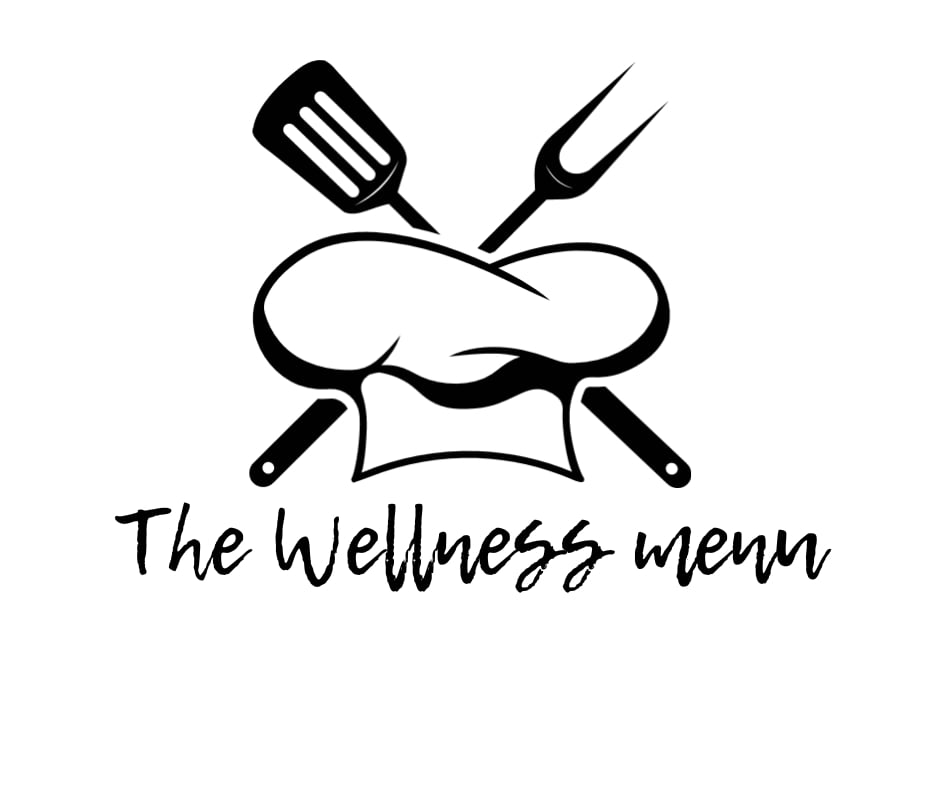
A Day in the Kitchen: Navigating a New Way of Eating with an Anti-Inflammatory Diet

I used to open my fridge and see endless possibilities—cheese for melting, bread for toasting, tomatoes for slicing. Meal planning was effortless, instinctual even. But one day, those familiar choices no longer worked for me. My body demanded a shift, and suddenly, I had to learn how to cook and eat in an entirely new way.
Following an Anti-Inflammatory Diet started as an overwhelming challenge. Grocery shopping felt like solving a riddle, with every label requiring careful scrutiny. My favorite comfort foods seemed off-limits, and I spent too much time Googling ingredient swaps. But as the days turned into weeks, I found a rhythm. Slowly, I discovered new flavors and techniques that turned this restrictive way of eating into an exciting, nourishing experience.
Morning Beginnings: A New Take on Breakfast
Mornings used to mean quick cereal or buttered toast. Now, they require a little more thought. But once I got the hang of it, breakfast became my favorite meal of the day.
One of my go-to options is almond-chia pudding. The night before, I stir together unsweetened almond milk, chia seeds, a touch of maple syrup, and a sprinkle of cinnamon. By morning, it transforms into a creamy, satisfying bowl that I top with fresh berries and crunchy walnuts.
On days when I crave something warm, buckwheat pancakes come to the rescue. Buckwheat flour, mashed banana, and a flaxseed “egg” create the perfect batter. Cooked in coconut oil and drizzled with raw honey, they taste like weekend brunch any day of the week.
Another great morning option is a smoothie packed with anti-inflammatory ingredients. I blend spinach, frozen berries, chia seeds, and coconut milk for a refreshing and nutrient-dense start to the day. The natural sweetness from the berries balances the greens perfectly, making it both delicious and nourishing.
Midday Fuel: Keeping It Fresh and Hearty
Lunch is when my energy tends to dip, so I look for meals that are both refreshing and sustaining. A favorite is a quinoa and greens salad. I cook a batch of fluffy quinoa at the start of the week, so assembling lunch takes minutes. I toss it with baby kale, toasted pumpkin seeds, and a bright lemon-tahini dressing. When I want something a little extra, I add sliced avocado and a handful of pomegranate seeds for a burst of flavor.
Another winner is an avocado and citrus medley. Creamy avocado pairs beautifully with segments of grapefruit and orange, sprinkled with sea salt and a drizzle of olive oil. It’s simple, but every bite is a perfect balance of rich, tangy, and refreshing.
For those days when I need something heartier, I opt for a nourishing soup. A blend of turmeric-spiced lentils, carrots, and ginger simmered in vegetable broth makes for a perfect midday pick-me-up. This dish is packed with anti-inflammatory ingredients, providing both comfort and health benefits.
Evening Comfort: Winding Down with Wholesome Dinners
By the time dinner rolls around, I want something deeply satisfying but not too heavy. That’s where herb-infused salmon with steamed greens shines. A fillet of wild-caught salmon, rubbed with fresh dill and lemon zest, roasts in the oven while I quickly steam some Swiss chard on the stove. The flavors are bright and clean, and the whole meal comes together in under 30 minutes.
On colder nights, I turn to a warm vegetable and lentil stew. Carrots, celery, and onions sauté in olive oil before I add red lentils, vegetable broth, and fragrant herbs. It simmers into a thick, comforting bowl of goodness, filling my home with the aroma of slow-cooked nourishment.
For variety, I also prepare roasted cauliflower and chickpeas with tahini drizzle. Roasting the cauliflower brings out its natural sweetness, while the chickpeas add a satisfying crunch. A drizzle of lemon-tahini sauce ties everything together beautifully.
Snacking Smart: Simple, Wholesome Bites
Between meals, I need snacks that keep me energized without weighing me down. Nutty energy bites—a blend of almonds, dates, and shredded coconut—are always stocked in my fridge for easy grab-and-go moments.
When I want something fresh, apple slices with almond butter never fail. The crisp sweetness of the apple against the rich, nutty spread satisfies both my taste buds and my hunger.
Another favorite is roasted turmeric-spiced nuts. Almonds, walnuts, and pumpkin seeds roasted with a sprinkle of turmeric, black pepper, and a touch of sea salt make for a crunchy, anti-inflammatory powerhouse snack.
The Journey of Reinvention
At first, learning to eat this way felt restrictive, frustrating even. I missed my favorite go-to meals, and I struggled with the constant label reading. But over time, I stopped focusing on what I couldn’t have and started embracing what I could.
Following an Anti-Inflammatory Diet has helped me discover new ingredients, play with fresh flavors, and find joy in the kitchen again.
One of the biggest surprises has been how much I enjoy the cooking process. Preparing meals no longer feels like a chore but rather an opportunity to be creative. I’ve learned that herbs and spices like turmeric, ginger, garlic, and cinnamon can transform simple dishes into something truly satisfying, all while supporting my body’s health.
Another rewarding aspect of this journey has been connecting with others who follow similar eating habits. Whether it’s exchanging recipes, swapping cooking tips, or simply sharing experiences, this sense of community makes the transition feel less daunting and much more enjoyable.
So if you’re on a similar journey, I encourage you to take it one meal at a time. Celebrate the small victories, like finally perfecting a recipe or discovering a new favorite dish. Because in the end, this isn’t about what we’ve given up—it’s about all the delicious possibilities we’ve gained.
Embracing an Anti-Inflammatory Diet doesn’t mean deprivation; it means nourishment, balance, and enjoying foods that truly support our well-being. It’s a lifestyle shift that, while challenging at first, becomes a rewarding and fulfilling way of eating that leaves you feeling vibrant and energized.
Recommended Recipes
The Basics of the Anti-Inflammatory Diet: A Guide to Reducing Inflammation Through Food


Kirsten Hamilton
Inflammation is a natural immune response, but chronic inflammation can lead to serious health complications, including heart disease, arthritis, diabetes, and autoimmune disorders. While medical treatments are often necessary, research increasingly supports the idea that diet plays a crucial role in managing inflammation. The phrase “food as medicine” has never been more relevant—what we consume daily can either contribute to inflammation or help reduce it.
The anti-inflammatory diet is not a restrictive regimen but a holistic approach to wellness, focusing on nourishing, whole foods and eliminating known inflammatory triggers. This guide provides essential insights into the anti-inflammatory diet, the best foods to include, and potential inflammatory culprits to avoid.
Understanding the Principles of an Anti-Inflammatory Diet
An anti-inflammatory diet is not just about eliminating harmful foods; it’s about replenishing the body with healing, nutrient-dense choices that support long-term well-being. Here are the fundamental principles:
1. Prioritize Whole, Nutrient-Dense Foods
Refined and processed foods often contain harmful additives, preservatives, and refined sugars that contribute to inflammation. Whole, minimally processed foods—such as fresh vegetables, fruits, legumes, nuts, seeds, and lean proteins—should be the foundation of your diet.
2. Consume Healthy Fats in Balance
The type of fat you consume matters significantly. Healthy fats, such as those found in extra virgin olive oil, nuts, seeds, and fatty fish, provide essential omega-3 fatty acids known for their anti-inflammatory properties. Meanwhile, trans fats and excessive omega-6 fatty acids (common in processed foods) can contribute to inflammation.
3. Incorporate Antioxidant-Rich Foods
Free radicals contribute to oxidative stress and inflammation in the body. Consuming antioxidant-rich foods—such as berries, leafy greens, and brightly colored vegetables—helps neutralize free radicals and support cellular health.
4. Promote Gut Health with Fiber and Probiotics
A healthy gut microbiome is crucial for controlling inflammation. Fiber-rich foods like legumes, whole grains, and vegetables feed beneficial gut bacteria, while fermented foods like yogurt, kefir, and kimchi provide probiotics to maintain gut balance.
5. Opt for Quality Proteins
Protein is essential for muscle repair, immune health, and overall wellness. However, not all protein sources are equal. Prioritize lean proteins such as wild-caught fish, pasture-raised poultry, and plant-based options like beans, lentils, and tofu.
6. Stay Hydrated and Choose Anti-Inflammatory Beverages
Hydration plays a key role in flushing toxins and maintaining optimal bodily functions. Water, herbal teas, and anti-inflammatory beverages like green tea and turmeric-infused drinks can help regulate inflammation.
Best Foods to Include in an Anti-Inflammatory Diet
Building an anti-inflammatory meal plan begins with incorporating a variety of beneficial foods:
Fruits: Berries, oranges, apples, cherries, and pomegranates, which are rich in vitamins and polyphenols.
Vegetables: Dark leafy greens (spinach, kale), cruciferous vegetables (broccoli, cauliflower, Brussels sprouts), and root vegetables like carrots and beets.
Healthy Fats: Extra virgin olive oil, avocados, nuts (almonds, walnuts), and seeds (flaxseeds, chia seeds).
Proteins: Wild-caught fatty fish (salmon, sardines, mackerel), free-range poultry, eggs, and plant-based proteins like lentils and chickpeas.
Whole Grains: Quinoa, brown rice, oats, and whole wheat.
Herbs & Spices: Turmeric, ginger, garlic, cinnamon, and rosemary, which contain bioactive compounds that combat inflammation.
Beverages: Herbal teas, green tea, and fresh vegetable juices that provide antioxidants and hydration.
Foods to Limit or Avoid for an Anti-Inflammatory Lifestyle
Certain foods are known to exacerbate inflammation, either due to their chemical composition or their impact on gut health. While occasional consumption may not be harmful, chronic intake of these foods can contribute to long-term inflammatory issues:
1. Refined Sugars and Processed Carbohydrates
Excessive sugar consumption spikes insulin levels and fuels inflammation. Sodas, pastries, white bread, and processed snacks are major culprits. Instead, opt for natural sweeteners like honey or dates in moderation.
2. Trans Fats and Industrial Seed Oils
Artificial trans fats and highly processed vegetable oils (such as soybean, corn, and sunflower oil) are linked to increased inflammation and cardiovascular disease.
3. Processed and Red Meats
Deli meats, hot dogs, and conventional red meats contain preservatives, excess sodium, and saturated fats that can trigger inflammation. Choosing grass-fed, organic, or lean protein sources can be a better alternative.
4. Dairy Products (for Sensitive Individuals)
While dairy is a nutritious source of calcium and protein, some individuals experience inflammation due to lactose intolerance or sensitivity to casein. Exploring dairy-free alternatives like almond, oat, or coconut milk may be beneficial.
5. Gluten and Refined Grains
For those with gluten sensitivity, wheat, barley, and rye can contribute to gut irritation and inflammation. Switching to gluten-free whole grains like quinoa and brown rice can provide a safer alternative.
6. Alcohol and Excessive Caffeine
Excessive alcohol and caffeine intake can disrupt gut health and contribute to systemic inflammation. While moderate consumption of red wine or green tea may have health benefits, overconsumption should be avoided.
Practical Tips for Implementing an Anti-Inflammatory Diet
Making dietary changes can feel overwhelming, but small, sustainable steps can lead to lasting benefits. Here’s how to start:
Gradual Substitutions: Replace processed foods with whole, nutrient-rich alternatives.
Experiment with Cooking: Incorporate anti-inflammatory spices and fresh herbs into your meals.
Meal Prep for Success: Planning and preparing meals in advance helps maintain consistency.
Stay Mindful of Portions: Even healthy foods should be consumed in balanced portions.
Listen to Your Body: Monitor how different foods affect your energy levels, digestion, and overall health.
Final Thoughts
The anti-inflammatory diet is not about strict rules or deprivation—it’s about making informed choices that support long-term well-being. By prioritizing whole foods, reducing inflammatory triggers, and staying mindful of dietary habits, you can harness the power of nutrition to promote healing, vitality, and overall health. Small, consistent changes can have profound effects on reducing inflammation and improving quality of life. Begin with one step at a time, and soon, an anti-inflammatory lifestyle will become second nature.

The Wellness Menu values your privacy and keeps your personal information secure. We use your data only to provide and improve our services and never share it with third parties unless required by law. By using our website, you agree to this policy.






GIPHY App Key not set. Please check settings